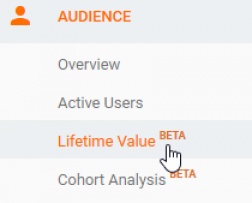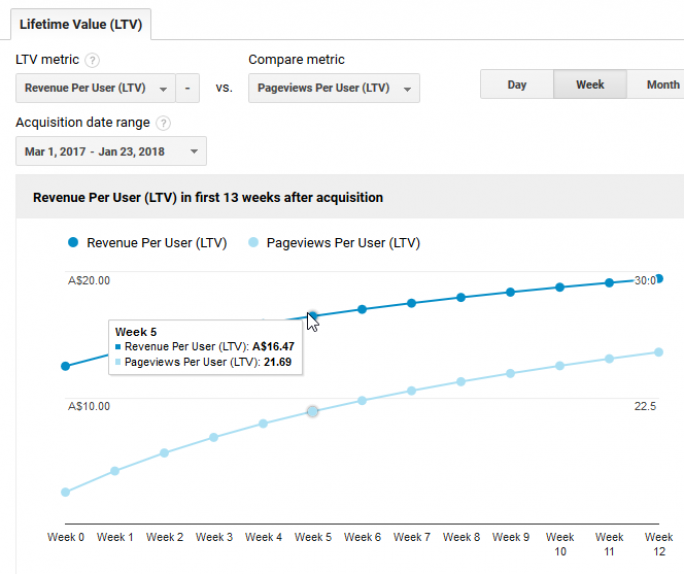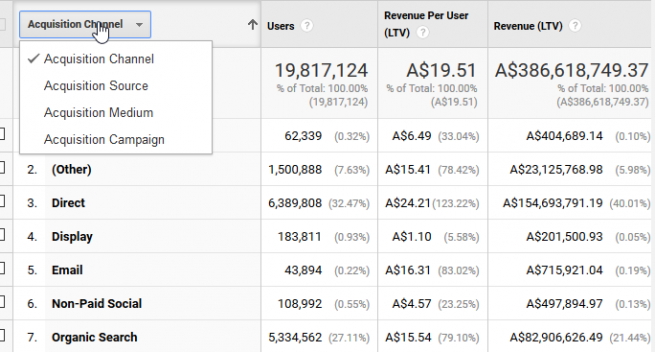Would you like to know how much you should spend on each of your customers and what is the return of these investments?
Is it the main goal of most of your marketing activities to know how much your advertising worth?
Well…You’d be half right. By this stage, it’s very likely that you’ve already heard about LTV and the advantages of calculating it. However, we’d argue that it’s also just as likely that you’ve never calculated it!
LTV is one of the most confusing metrics in e-commerce, that is often misunderstood. If you Google anything to do with LTV calculation, you will find tons of formulas, many of which are not practical. In this article, we want to change this perception about LTV, and show how it has become more approachable. This is thanks to the new features that were introduced in Google Analytics.
Let’s firstly define user lifetime value and customer lifetime value, to make sure that we are all on the same page.
What is Customer Lifetime Value?
Customer Lifetime Value (CLV) or Lifetime Value (LTV) is a key metric, that illustrates a prediction of the net profit of an entire future relationship, with a customer in marketing. LTV should inform nearly every business decision, especially in advertisement spend. The budget that you allocate for your get for your advertising, should be in line with what you can expect every customer, to bring you in the long term.
Lifetime value report in Google Analytics
There is a relatively new report in the Audience section of Google Analytics that is called Lifetime Value.
This report will allow you to have a better understanding of the value that a user has, during the 90 days following a user acquisition. The 90 days period can be incremented by days, weeks and months. In this report, you can compare the lifetime value based on two metrics as shown in the following image.
The following metrics are available:
-
Goal Completions Per User (LTV)
-
Pageviews Per User (LTV)
-
Revenue Per User (LTV)
-
Session Duration Per User (LTV)
-
Sessions Per User (LTV)
-
Transaction Per User (LTV)
In addition the LTV of users can be based on four different dimensions, that are channel, source, medium and campaigns.
Lifetime value is calculated using the cumulative sum of the metric value, divided by the total number of users acquired during the acquisition date range.
Revenue per User (LTV) = Revenue (LTV)/ Users
For example, as it is presented in the following example:
So Revenue per user (LTV) is calculated as:
361,805,841.13 / 18,085,477 = 20.01
Application
In this article, we demonstrated an easy way to estimate your customers’ lifetime value, without a complicated formula, spreadsheet or machine learning techniques. its important to note that different information about customers’ lifetime value can be captured using Google Analytics. Here, we introduce some actionable ways to use your customer lifetime value.
1. Monitor your performance
One simple application of LTVCLV is monitoring your performance. It is recommended to calculate LTV at least once a month and compare your performance to see the effectiveness of your marketing strategies, in improving the lifetime value of your customers.
2. Develop your marketing strategy
Different if-then scenarios can be conducted to investigate the effect of various variables, on the lifetime of your customers. You can figure out what variables can be changed, in order to drive different customer behaviour. For example, you might find out that reducing the price of your products not only make your customers more frequent but also reduces their churn rate. Through knowing this new information, by reducing the price of some of your products you can increase your customers’ lifetime value.
3. Identify your most profitable marketing channels
Using the reports provided by Google Analytics you can look at LTV by acquisition channels, campaigns, source and medium. LTV can tell you if you are underspending or overspending on each of these channels. A good example would be the following. Let’s say you find that the LTV of email is $100 but the LTV of a Facebook channel is $200, knowing that the Facebook channel is more valuable, you should spend twice on Facebook as compared to email.
4. Develop a loyalty program
You can categorize your customers based on their lifetime value, and customise your message with each group of your customers. In this connection, you can develop a loyalty program that sends different messages and incentives, to different groups of customers and constantly monitors the effectiveness of your loyalty programs.
So what have we covered regarding User Lifetime Value?
In this article, we have tried to change the perception of LTV as an obscure and unreachable approach. We demonstrated how calculating LTV is becoming more important for businesses moving forward and how calculating LTV has become simple by the new feature that has been introduced in Google Analytics – Customer Lifetime Value.
Here at XPON, we understand that analysis can be confusing and if you’d still like some extra help, our data science team is more then willing to help out. Leave a comment or get in touch with us to learn how you can measure your Customer Lifetime Value.




